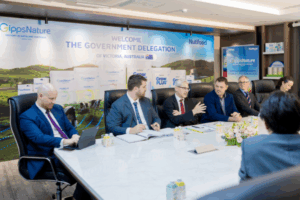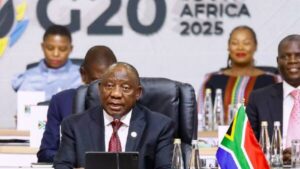
The Liberal Party is making concerted efforts to restore its public image following a tumultuous period marked by internal conflicts and contentious debates at both state and national levels. Federal Opposition Leader Sussan Ley is concentrating on rising power prices as her colleagues have decided to abandon their commitment to a net-zero emissions reduction target by 2050. This shift in policy represents a significant pivot towards fossil fuels, aiming to prioritize lower electricity costs for consumers.
Ley has directly linked the increase in power prices to the struggles faced by manufacturing businesses in Victoria. Speaking on Sydney radio station 2GB, she stated, “Victorians are really hurting, they really are and a lot of this comes down to manufacturing.” This move comes as the party grapples with the challenge of justifying its abandonment of the emissions reduction target in urban constituencies, where climate change remains a critical concern for many voters.
The Liberal Party experienced significant electoral setbacks in inner-city areas during the May elections, losing many seats. Nevertheless, party officials are optimistic that a focus on reducing power bills could resonate with voters facing economic difficulties. Recent polling indicates a potential turnaround for the Liberals in Victoria, where new state leader Jess Wilson is viewed as a preferred premier by nearly half of the respondents, in contrast to Jacinta Allan, the current Premier, who garnered support from only 33 percent.
The coalition is currently leading the two-party-preferred vote by 51 to 49 percent. In New South Wales, new Opposition Leader Kellie Sloane, who assumed her position on October 6, 2023, faces a daunting task. She must navigate the complexities of both state and federal party dynamics, particularly following the climate policy disputes that have created friction within the national party.
According to pollster Kos Samaras, the Liberal Party risks losing further support in inner-city areas unless it develops a robust climate policy. Currently, only 10 percent of Generation Z, a demographic intensely concerned about climate issues, supports the party. In stark contrast, the Labor Party enjoys a 51 percent primary vote among this group.
Additionally, the Liberals are under pressure to appeal to a more multicultural electorate, as polling shows only 17 percent of diverse Australians support the party, compared to 46 percent for Labor. The situation is particularly challenging in major cities like Sydney and Melbourne, where demographic shifts are significant.
In the coming weeks, Ley is expected to unveil a migration plan, a response to ongoing divisions within the party concerning energy and environmental policies. While there is a push to reduce Australia’s immigration intake, negative rhetoric surrounding migrants has alienated many diverse communities from the party.
Sloane’s first official visit as NSW Liberal leader took her to Little India in western Sydney’s Harris Park, situated far from her affluent electorate of Vaucluse. There, she engaged with local businesses and community members, illustrating the party’s intent to reconnect with multicultural populations and regain lost ground in Sydney’s diverse suburbs.
As the Liberal Party seeks to redefine its identity amidst internal strife and shifting public sentiment, it remains to be seen whether these strategic moves will effectively resonate with voters moving forward.







